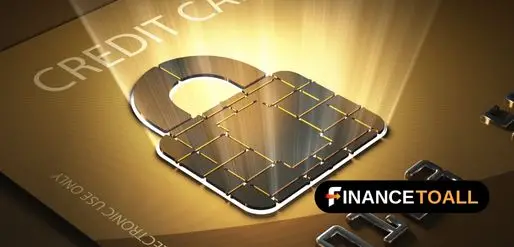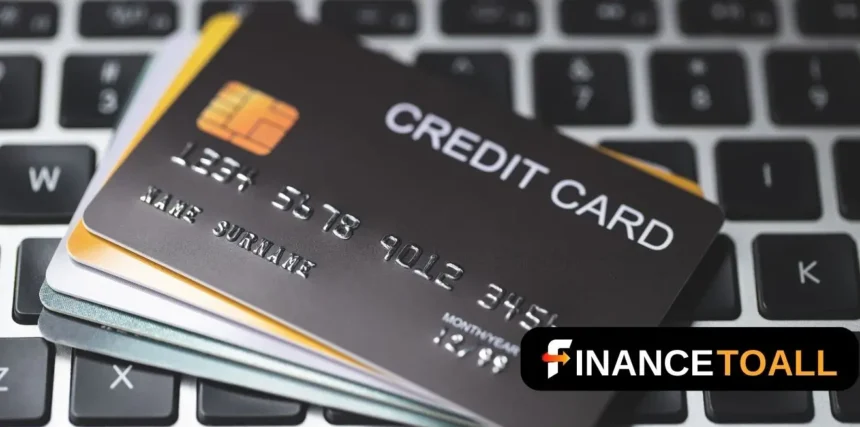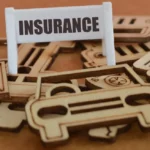What Is a Credit Card?
When you make a purchase using a credit card, you are borrowing money from the financial organization that provided the card. And since you have borrowed money, you must repay it within a defined timeframe. If you do not repay the borrowed amount by the due date, a specific percentage of interest is added to it.
You can purchase goods and services using a credit card and pay for them later. This can be really helpful for times when you have to make a purchase but are short on funds.
Typically, financial companies that provide credit cards place a limit, known as the credit limit, on the maximum amount you can borrow. This limit is determined after taking your income, age, and other considerations into account. You can continue to make purchases until you reach the credit limit on your credit card. Once you’ve exhausted your limit, you can no longer use the card until you repay your dues.
Credit Card Definition
A credit card is a financial tool provided by a bank in the form of a loan, with a line of revolving credit that you can access via your card (and your card’s account). You can use your credit card’s credit limit for both little and major transactions. Similar to traditional loans, a credit limit is subject to interest, also known as APR, which is charged to your card bill if the balance is not paid in full each month.

IMPORTANT POINTS ABOUT CREDIT CARD
- A credit card is issued by a financial institution and allows you to borrow money up to a certain limit in order to make purchases.
- To make an in-person purchase, the card must be inserted into a card reader. To make a purchase online, you must provide your complete card number and billing address.
- After paying back what you’ve borrowed, you can borrow up to your credit limit again.
- Generally, you can avoid interest charges by paying your balance in full by the due date.
- Despite their similar appearance, debit cards function differently. They permit you to make purchases by deducting funds electronically from your checking account.
How Does a Credit Card Work ?
Now that you understand the meaning of a credit card, let’s examine its operation. Here’s an illustration to help you understand it better.
Suppose you have a credit card with a total credit limit of $100,000 and that your statement is generated on the first of every month. Now, you wish to acquire a smartphone costing $25,000 dollars. You do not have the necessary money with you. Therefore, on August 18, 2022, you use your credit card to buy a smartphone.
Your credit card bill is generated on September 1, 2022, requesting payment of $25,000 by September 12, 2022, at the latest. As long as the balance is repaid on or before the due date, you will not incur any additional fees or interest. However, if you miss the due date, you will be charged a specific percentage of interest on the $ 25,000 you owe until you complete payment.
What are the features of a credit card?
The features of credit cards tend to vary based on the issuer and the type of card you select. The following are some of the most typical characteristics of bank credit cards.
Withdrawal capability
Credit cards allow you to withdraw cash from ATMs in addition to allowing you to purchase goods and services. However, doing so may incur fees such as cash withdrawal charges and interest.
Credit card borrowing
Many credit cards allow you to obtain a quick personal loan up to a specified percentage of the available credit limit.
Capacity to convert substantial purchases to EMIs
If you’ve made a large purchase with your credit card, you have the option of repaying the balance in manageable installments over time.
Contactless payments
Credit cards are now available with an embedded NFC chip, allowing you to make payments by just tapping the card on the POS terminal.
What are the benefits of a credit card?
Let’s move on to the credit card’s perks now that you’ve seen some of its features. Here are some of the most significant benefits you will enjoy.
You can purchase items on credit
The fundamental advantage of a credit card is that it enables you to make purchases even if you lack the necessary finances.
You are not required to carry cash
With a credit card, it is unnecessary to carry huge amounts of cash. Additionally, they are accepted globally.
You receive bonuses, rebates, and cashbacks.
When used to make purchases, many bank credit cards offer benefits in the form of discounts and cash-backs.
You may easily monitor your expenses
Each time you use your credit card to make a purchase, you receive an alert. There’s more. In addition, you receive a monthly statement detailing all of your card purchases. This makes expense tracking significantly easier.
How Your Credit Line Works
Each time you buy something, the amount of credit you have left goes down by that amount. If your credit limit is $300 and you spend $25, you would still have $275 in credit. The credit card company will charge you $25. If you borrow another $50 before paying back the first $25, you will owe the bank a total of $75 and have a total of $225 in credit available.
The main difference between a credit card and a regular loan is that you can use your credit limit again after you pay off the balance. Assuming you started with a $0 balance, if you paid back the $75 you owed by the time your credit card bill was due, you’d have $300 in credit again.
As long as you follow the terms of the credit card, you can spend up to your credit limit and pay off the balance as many times as you want.
Credit cards are called “revolving accounts” or “open-ended accounts” because you can keep taking out loans up to your credit limit.
How Credit Card Interest Works
The company that gave you the credit card gives you a certain amount of time to pay back the full amount you borrowed before they start charging you interest. The time before interest starts to be charged is called the “grace period,” and it usually lasts about 21 days.
If you don’t pay off your full balance by the end of the grace period, a fee or finance charge is added to your balance. The amount of the finance charge depends on your interest rate and the amount you still owe.
The interest rate is the amount you pay each year to use your credit card to borrow money. Most of the time, your interest rate depends on the market interest rate, your credit history, and the type of credit card you have.
How Credit Card Minimum Payments Work
Most of the time, you have to pay your statement balance in full on or before your due date or you will have to pay interest. But the company that gave you the credit card usually doesn’t expect you to pay back everything at once. To avoid a late fee, you must make at least the minimum payment by the due date. How your minimum balance is set by your credit card company varies, but you can find it in your credit card terms.
To keep a good credit history and avoid late fees, you should always pay at least the minimum amount on time each month.
Credit Cards vs. Debit Cards
Even though credit cards and debit cards look the same, they are very different in how they work. When you use a credit card, you borrow money from the company that gave you the card. With a debit card, you pay for things with money from your checking account. You also need to enter your PIN when you use a debit card.
You can also use a debit card to get cash out of your checking account at an ATM or when you buy something. Some credit cards let you get cash by taking out a cash advance, but the interest rates on these transactions are usually higher than those on purchases, and there may not be a grace period. In other words, the advance must be paid back with interest.
| CREDIT CARD | DEBIT CARD |
| Allows you to borrow against a credit line. | Allows you to deduct purchases from your checking account electronically. |
| You may have to enter your billing ZIP code to make a purchase. | You may have to enter your PIN to make a purchase. |
| You may be able to withdraw cash by making a cash advance. | You can use it to withdraw cash from your checking account. |
Important credit card terms
When you’re thinking about getting a credit card, there are a lot of terms that might seem strange or confusing, but you need to know what they mean to find the best card for your lifestyle. Here are some of the most common words and phrases you may come across:
Interest rate: When a bank gives a customer a line of credit, they charge interest as a fee. Interest rates vary by card and by the credit score of the person applying for the card. If you keep a balance from one month to the next, you will be charged interest.
Annual percentage rate, or APR, : is another name for the interest rate on a credit card. APRs are usually anywhere from 12% to more than 24%.
Credit limit: A credit card’s limit on how much you can spend is called its “credit limit.” People with little or no credit history may only be able to borrow a few hundred dollars at first. Credit limits can be very high for people who have had cards for a long time.
Credit score: A credit score is a number that banks and credit card companies use to figure out if you are a good credit risk. There are a number of things that go into figuring out your credit score, which can be anywhere from 300 to 850.
Credit card balance: Your credit card balance is how much you owe the credit card company at the end of your billing cycle and how much you have spent on your card.
Cash advance: When you use your credit card to get cash from an ATM, this is a cash advance. Cash advances have high fees and no grace period. Unless you have to, you shouldn’t get one unless you have to.
Pros and cons of using credit cards
Most of the time, the bad things about credit cards can be avoided if you have good credit habits. If you always pay your credit card bill on time, for example, you never have to worry about how a late payment might affect your credit score. If you stay within your budget when you use your credit card, you won’t have to worry about going into credit card debt or getting out of it in the future.
| Pros | Cons |
| You can make purchases now and pay them off later. | Making purchases you can’t pay off can lead to credit card debt. |
| You can earn rewards on everyday expenses. | Learning how to maximize your credit card rewards takes time. |
| You can pay off your balance in full or pay it off over time. | Any balance not paid off in full can accrue interest that compounds daily. |
| You can take advantage of money-saving features, like 0% intro APR offers on purchases and balance transfers. | If you don’t pay off your balance before a 0% intro APR offer ends, you could get stuck with high interest charges. |
| Credit cards are easy to use and widely accepted. | Certain cards (such as Discover or American Express) might not be accepted by every merchant. |
| Good credit habits help you build a positive credit history and credit score. | Poor credit habits could damage your credit history and lower your credit score. |
| Credit cards can protect against security fraud. | A credit card fraud investigation may take up to 90 days to complete. |
Conclusion
One of the best ways to pay for something is with a credit card. It lets you buy your favorite goods and services without having to pay for them right away. You also get to enjoy a number of rewards and discounts when you use your card. You also get to build your credit history and credit score.
In spite of all the features and benefits of credit cards, you should always remember that it is very important to use them responsibly. Don’t use your credit card too much, and make sure to pay off all your bills in full before the due date. This way, you won’t get stuck in a debt trap, but you’ll still be able to use your credit card to its fullest.
Frequently Asked Questions on Credit Card
Q.1 How to use a credit card?
To use a credit card online, you just need to choose “credit card” at the payment gateway, enter the card’s information, and make the payment.
To use it offline, you just need to put the card into the card reader machine and enter the four-digit PIN. You can also pay for your product or service by tapping your card on the card reader machine if your card supports contactless payments.
Q.2 ️Which type of credit card is the best?
There are many different kinds of credit cards, each with its own set of features and benefits. Some credit cards give you points for shopping online, and others give you money back on purchases. There are also travel credit cards with rewards like air miles and high-end credit cards that come with free memberships and other perks. You can even get credit cards for your business, which can only be used for business expenses.
Most of the time, the best type of credit card is the one that fits your needs and wants the best.
Q.3 What is credit card simple definition?
A credit card is a type of credit facility. Banks give credit cards to customers so they can borrow money up to a certain limit. It makes it possible for customers to buy goods and services.
Q.4 What is credit card and how it works?
Credit cards give you a line of credit that you can use to buy things, transfer balances, or get cash advances. You will have to pay back the amount you borrowed in the future. When you use a credit card, you must pay at least the minimum payment by the due date each month.
Q.5 What are the different types of credit cards?
Rewards cards.
Travel credit cards.
Cash back credit cards.
Starter credit cards.
Business credit cards.
Co-branded credit cards.
Q.6 What’s the minimum payment on a credit card?
When you get your credit card bill, you can usually pay three amounts: the minimum due, the balance on the statement, and the current balance. The minimum payment is the least amount of money you have to pay each month to keep your account in good standing.
Image Source : Google








